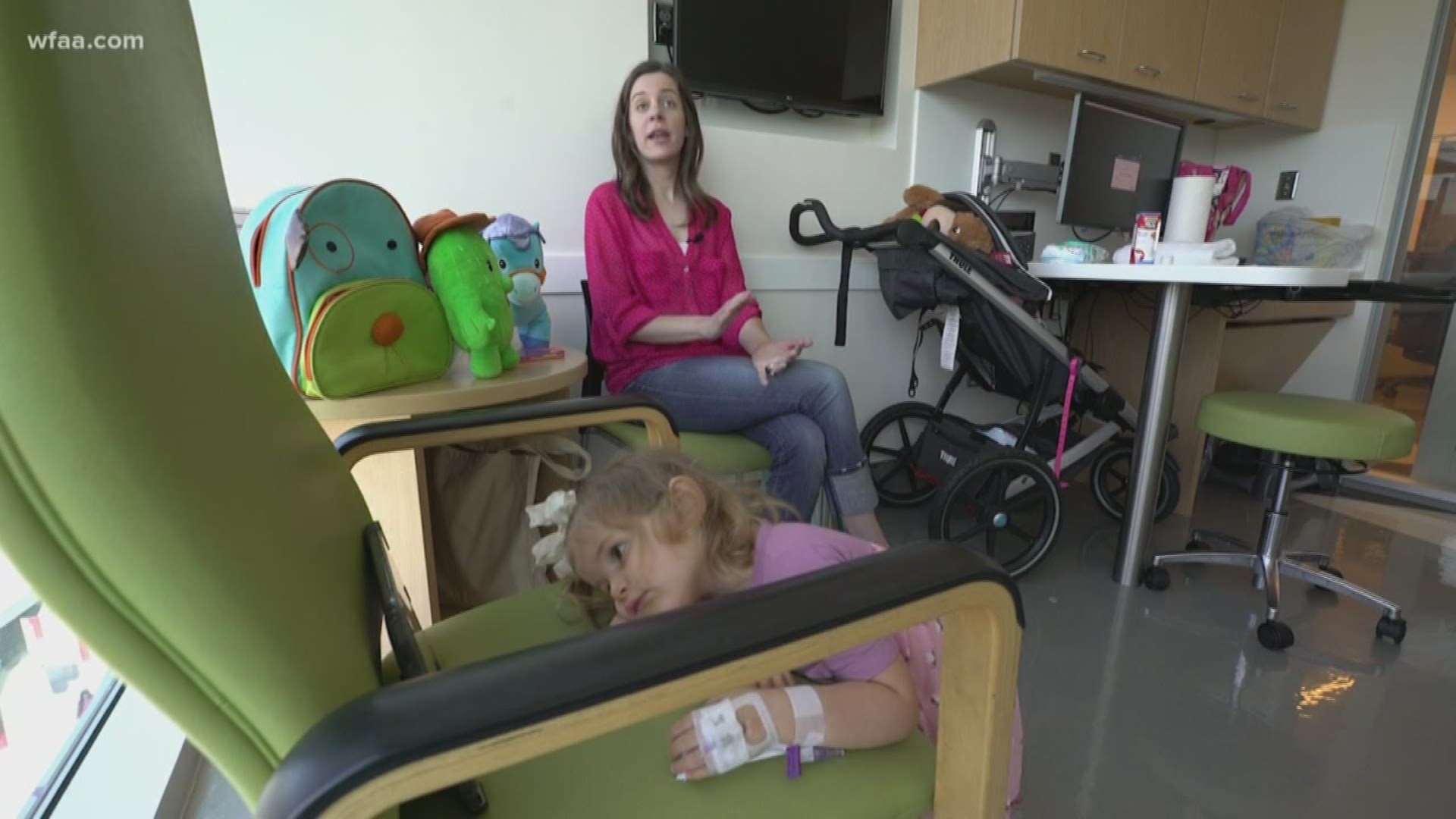DALLAS — Esther Kinney and her parents make frequent trips to Children’s Health in Dallas from their home in Oklahoma City so that specialists can help them determine, safely, what the extremely allergic 2-year-old can eat.
Monday morning, with a stuffed animal clutched in her hand, she marched confidently into an exam room on the fourth floor of the Children’s Health Specialty Center like she has done so many times before.
At just 7-months old she became violently ill after her parents introduced oatmeal to her diet. Up until then, her diet only consisted of breast milk.
Within hours the her parents were at an Oklahoma emergency room.
Esther had become "lethargic, sheet-white," her father, Nate Kinney said.
She appeared that way during her most extreme allergic episodes.
“Most extreme times, her eyes roll back in her head went completely limp, on top of projectile vomiting every 10 mines for 3 to 4 hours," Nate Kinney said.
Eventually doctors realized it wasn't just the flu or a stomach bug.
"So, it's a very uncommon disease. We're seeing more and more of it,” said Dr. Drew Bird, director of the Food Allergy Center at Children’s Health.
Esther was eventually diagnosed with Food Protein-Induced Enterocolitis Syndrome (FPIES), a type of food allergy affecting the gastrointestinal tract.
"It's a big unknown,” Bird said. “The disease has been so under recognized in the past that we don't know all the answers of why the reaction occurs like it does."
Esther's mom, Heather Kinney, is a pediatric nurse and had never heard of the disease.
"I read the symptoms and in my gut I thought, 'Oh my gosh. I think she may have this,'" Heather Kinney said.
On Monday morning, Esther visited Children’s Health to have another food introduced into her diet.
It would be a small bowl of wheat cereal in milk.
But, as is the usual precaution with the introduction of a new food, nurses first installed an IV port on her left hand just in case a bad reaction would necessitate IV fluids to help her recover.
Before she started going to Children's Health, Esther only had one safe food: carrots.
Late Monday afternoon, Esther did have a reaction to the wheat cereal she’d eaten earlier in the day.
And that is why the introduction of new foods continues to be conducted under the care of medical professionals. She remains allergic to beef and pork and avoids all grains.
But to date she has 35 foods that have been proven safe for her to eat including salmon, turkey, chicken, eggs and a variety of fruits and vegetables.
"We would expect that she would outgrow the reactivity to all the foods that she's reacted to. But we'll have to follow her over time and see,” Bird said.
"And can have a normal healthy life where she doesn't have to worry, well we're hoping she won't even remember,” Heather Kinney said.
The family also hopes that Esther will be able to order from a kid's menu at a restaurant one day.
Recent research shows one in every 13 U.S. children have a food allergy. With the diagnosis of food allergies on the rise, experts at the Children's Health Food Allergy Center, the only center of its kind in North Texas, are working with children from all over the region to safely introduce foods through treatments like food challenges and clinical trials.
May is Food Allergy Awareness Month.

